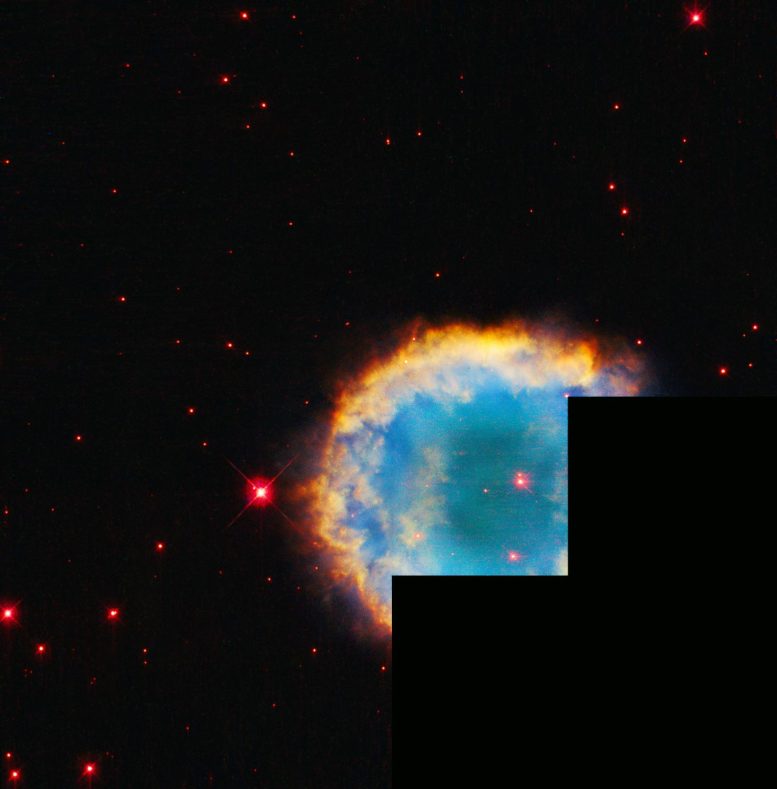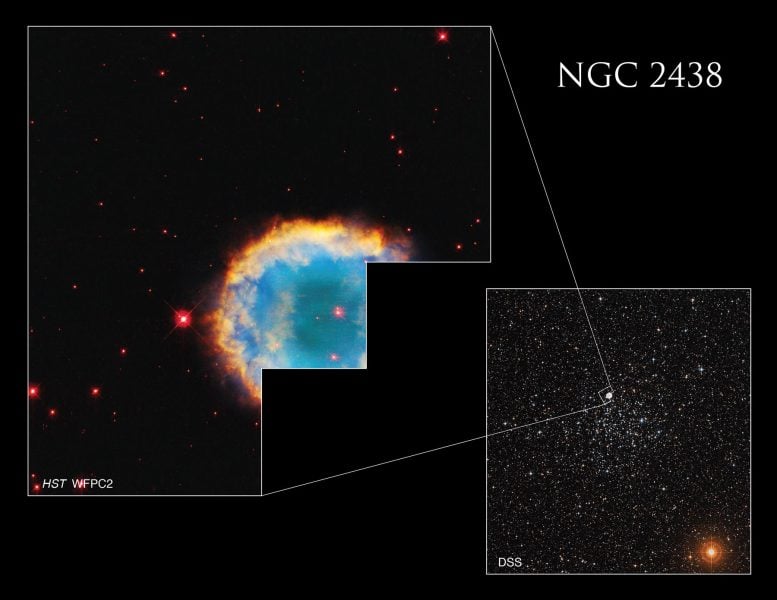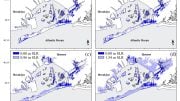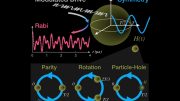
NGC 2438 is a planetary nebula that formed following the demise of a Sun-like star. Credit: NASA, ESA, K. Knoll (NASA Goddard), and S. Öttl (Leopold Franzens Universität Innsbruck), et. al.; Processing: Gladys Kober (NASA/Catholic University of America)
NGC 2438 is a planetary nebula, formed after the death of a Sun-like star. The medium-sized star would have expelled its outer layers of gas into space as it died, leaving behind a white-dwarf core. A halo of glowing gas over 4.5 light-years across surrounds the nebula’s brighter inner ring. Many round or nearly round planetary nebulae display these halo structures, and astronomers have been investigating how they evolve. NGC 2438 was one of the nebulae studied, and researchers found that the nebula’s halo glows due to the ionizing radiation of the central white dwarf.
In this color-filled image, blue represents oxygen (O III), green is hydrogen (H-alpha), orange is nitrogen (N II), and red is sulfur (S II).
This Hubble Space Telescope image was captured by Hubble’s Wide Field and Planetary Camera 2, which gave it its distinctive stair-shape. One of the camera’s four detectors provided a magnified view, which would be shrunk down in the final image to match the other three, creating the unique shape.

The colorful planetary nebula, NGC 2438, appears to lie on the outskirts of the open star cluster, M46 (NGC 2437). The nebula is actually in the foreground between us and the star cluster. Credit: NASA, ESA, K. Knoll (NASA Goddard), S. Öttl (Leopold Franzens Universität Innsbruck), et. al., and DSS; Processing: Gladys Kober (NASA/Catholic University of America)
More Detail on “Missing” Blank Portions in Image
A previous camera installed on Hubble, called the Wide Field and Planetary Camera 2 (WFPC2), produced a “step” effect on many images. The dark regions or “missing” parts of those images are simply portions that have no Hubble data. Three of the camera’s four light detectors imaged “wide fields,” while the fourth detector (PC for planetary camera) had higher resolution but covered a smaller portion of the sky. With all four combined, the “step” effect resulted, meaning there are areas where Hubble observations were not taken.
WFPC2 was replaced during Hubble’s last servicing mission in 2009.









Be the first to comment on "Death of a Sun-Like Star: Hubble Images Colorful Planetary Nebula"